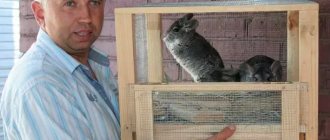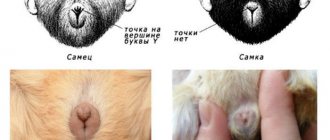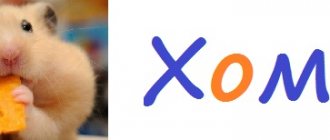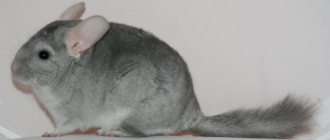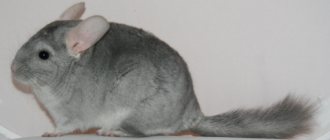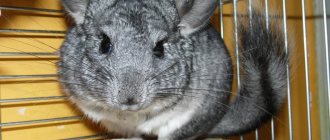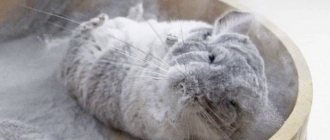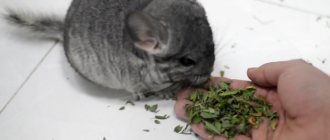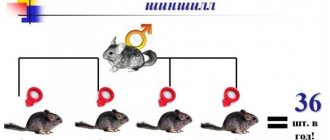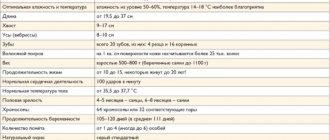First of all, do not confuse a chinchilla with a chinchilla rabbit. Chinchilla rabbits were bred specifically as an inexpensive surrogate for the real chinchilla; their fur is similar to chinchilla fur only in appearance. They appeared because chinchilla breeding as a business has not covered the need for chinchilla fur for several centuries.
Chinchilla fur is unparalleled, but is relatively short-lived, and the skin is very thin and delicate. Even the wives of oligarchs and superstars do not wear chinchilla products every day. A chinchilla fur coat or hat cannot be passed down from generation to generation, like a sable or beaver one. So there is no end in sight for the demand for chinchillas. The forecast for Russia gives consistently high demand for 40 (!) years ahead. There are probably no analogues to this indicator among other products.
A little about chinchillas
There are two species of chinchillas: the long-tailed chinchilla (Chinchilla lanigera) and the large short-tailed chinchilla (Chinchilla brevicaudata). Both are the size of a small rabbit or a large rat; the quality of the fur is equivalent.
The animals come from South America, from the Andes. They are not picky about food: they are rodents and eat rabbit feed and hay. They live in polygamous families - one male for 4 females. Social animals, at least two families should see each other and visit each other. Chinchillas are peaceful and never fight. They live up to 20 years.
These animals reproduce very poorly for rodents: in captivity, the female gives 1-2 litters of 1-2 cubs per year. Very demanding on climatic factors and water quality. It can only be kept indoors without drafts and scorching sunlight, but the air should be fresh and not musty.
The content temperature is 18-24 degrees Celsius. The maximum permissible water hardness is 12 German degrees, but already at 8 the animals feel bad and stop reproducing. Chlorine, industrial pollutants, and organic matter in water are unacceptable. In fact, the water must be artesian or spring water.
Air humidity is permissible no more than 68-70% average and 85% short-term. It is better to keep it at 60%. Dampness and condensation will negate all the efforts of the chinchilla breeder.
References to chinchillas kept as pets are illegal. A domestic chinchilla does not need to reproduce and is not required to have marketable qualities.
Chinchillas have toilet skills and are easy to care for. Having provided plenty of dry food and water, you can go away for several days. But chinchillas do not tolerate disturbances and visits from strangers.
Mini farm: what do you need?
First of all, this is the room. Its size should be proportional to the number of animals that you are going to breed there. Ensure that the room is always dry and clean. For hot days it is better to install air conditioning.
Secondly, you will need to legalize your activities. To do this, you will need to open a business and pay taxes to the treasury every month.
Thirdly, it will require spending some amount on purchasing breeding animals for breeding and food.
And fourth, is the staff. To begin with, you may need just one assistant who will monitor the behavior of the animals, clean their cages, feed them, etc.
Chinchilla business
The first Spanish conquistadors tried to breed chinchillas. But the seemingly fantastically profitable business of shisha breeding never became widespread. There are several reasons.
Firstly, chinchillas are social animals, but their communities are quite closed. It is impossible to organize a large commercial chinchilla farm: the animals will feel there like a bushman snatched from his native Kalahari and thrown into a polluted metropolis teeming with people. When mass breeding of any animals, it is impossible to ensure the complete absence of ammonia in the air, and for chinchillas it is destructive.
Secondly, chinchillas are sickly animals, and when there is a mass accumulation of them, any epizootic develops rapidly.
Thirdly, industrial methods for processing chinchilla skins have not yet been found. The skin of the animal is so thin and tender that it tears to the meat under your fingers. You can only pick up a chinchilla by the ear or tail. Only certain furriers - virtuosos - can produce chinchilla skins, and almost all of them have their own secrets.
Therefore, large-scale commercial breeding of chinchillas turns out to be too risky, given the amount of initial costs, and the profit of the chinchilla business is based on the high price of finished products. On a large scale, it is more profitable to breed chinchilla rabbits and trade as a substitute for natural chinchillas.
Implementation issues
Now you have already equipped a large room with cages, purchased animals, mated, and received the first young animals, which have grown to one year old. What's next? Where can I sell the product?
Here is a list of possible buyers:
- Farmers at the fur market. These can be experienced business owners, novice buyers, as well as those involved in the resale of goods, intermediaries. It won't be difficult to find them. You will need to carry out advertising work, display samples of your products on various thematic sites and portals. As we have already said, you can sell live animals, skins, meat;
- All kinds of pet stores, zoos, exhibition centers, nurseries that need a live animal;
- Ordinary residents of cities and villages who buy animals for their homes;
- Fur factories;
- All kinds of catering establishments for selling meat (restaurants, cafes, canteens, etc.).
As you can see, chinchilla breeding is a very hassle-free and promising business if everything is calculated correctly. Do what you love and expand your production scale.
Is home chinchilla farming profitable?
But is it profitable to breed chinchillas at home? Are there entire profitable industries based on individual production?
At first glance, the prospects are tempting: intermediaries willingly take tanned chinchilla skins for $1,000 or more per piece in its standard color. Skins with color variations are sold individually, often at auction. The price of a finished chinchilla fur coat at $300,000 is not considered excessive.
But the technology for preparing chinchillas in Russia is unknown. The cost of slaughtering an animal is 20,000 – 60,000 rubles. with a standard color, and chinchilla nurseries offer them from 2000 rubles. But it’s unlikely to be able to support more than 10 families in an air-conditioned apartment.
Families cannot be broken up; excess males go to slaughter. At the rate of reproduction indicated above, we will obtain 10–40 marketable animals per year. This is, in the best case, 2,400,000 rubles. per year or 200,000 per month, with a minimum initial investment of 800,000. We do not count current expenses, they are insignificant.
As you can see, the business plan for breeding chinchillas in the end looks more modest than a “rabbit” or “nutria” one, despite the prospects being rosy at first glance. World practice confirms the calculations - to this day, despite the strict laws of the countries of their original habitat, chinchilla poaching is quite widely practiced, which is why the natural population of chinchillas is under threat of extinction.
SILVER CHINS
| CATEGORY | COLOR | SIZE | Price , rub.)* |
| SELE WITH T | XXD | 39 — 42 cm | 2600 — 2800 |
| 36 - 39 cm | 2500 — 2600 | ||
| KLASS 1+ | XXD | 33 — 36 cm | 2000 |
| XD > XXD | 39 — 42 cm | 2200 | |
| 36 - 39 cm | 1700 | ||
| 33 – 36 cm | 1200 | ||
| XD | 39 — 42 cm | 1900 | |
| 36 - 39 cm | 1600 — 1700 | ||
| 33 – 36 cm | 1000 | ||
| D | 39 — 42 cm | 1600 | |
| 36 - 39 cm | 1500 | ||
| CLASS 1 | XXD | 39 — 42 cm | 2200 |
| 36 - 39 cm | 2000 | ||
| 33 – 36 cm | 1900 | ||
| XD > XXD | 39 — 42 cm | 2000 | |
| 36 - 39 cm | 1600 | ||
| 33 – 36 cm | 1200 | ||
| XD | 39 — 42 cm | 1700 | |
| 36 - 39 cm | 1500 — 1600 | ||
| 33 – 36 cm | 1000 *** | ||
| D | 39 — 42 cm | 1600 | |
| 36 - 39 cm | 1500 | ||
| KLASS 2 | D - XXD | 39 — 42 cm | 1000-1500 |
| 36 - 39 cm |
To better understand the pricing for the purchase of dry chinchilla skins ** , especially for farmers, we have created an easy-to-read table taking into account most possible variations of skins in quality, size and color.
select class includes only the darkest skins of xxd , with dense and mature fur, without any flaws or defects. With a size from the tip of the nose to the base of the tail of at least 36 cm .
Class “ 1+ ” includes a larger number of color variations. These can be skins of XXD but less than 36 cm in size, as well as XD and even D . The main thing that unites the skins in this class is the maturity and thickness of the fur.
Skins belonging to “ 1 ” class can also vary in darkness of color. They will be slightly inferior to the “ 1+ ” class in terms of fur density and may have a slightly warmer tone of the main coat, while the fur must be mature and without defects.
Class “ 2 ” includes any skins from the listed sizes, colors and density of fur, but may have some non-critical defects, such as slightly unripe fur, or small patches. Such skins are mainly used for painting, for repairs, or for sewing finished products. We buy second-class skins only when necessary, or upon client’s order. Such skins are in little demand in retail sales.
There is another class called " mix" . It includes skins that have significant defects: fur gnawing, damage received during sanding, skins of fallen animals, chinchillas killed during the molting process, etc. This class is not indicated in the table, since today we do not purchase such skins. In theory, they can be used by craft enthusiasts.
* The prices indicated in the table are not a public offer, but are presented for understanding the general picture of pricing. The actual purchase price may be slightly higher or slightly lower than the prices listed, depending on the season and the need for a particular class of hides at the time of purchase.
** It must be borne in mind that the evaluation of the skins is carried out only after their final dressing, which on average takes about a month. It is not possible to assess the quality of dry, unprocessed skins due to the characteristics of chinchilla fur.
*** The cost of small size skins is not proportionally lower than the cost of standard size skins, this is especially noticeable in the XD and D . This is due to the fact that the cost of sewing fur coats in many studios is calculated based on the number of furs sewn. When working with small skins, the furrier has to add two additional vertical rows to the cutting for symmetry, which significantly increases the cost of sewing the final product. This is compensated by the lower price of the skins themselves.
Preparing a fur auction
Preparations for each auction begin 1-2 months before its start. Suppliers of chinchilla skins deliver their goods to auction warehouses. The fur must be checked to see if it meets the generally accepted standard. Specialists working in the auction company sort the incoming fur, after which the fur pelts are divided into lots, which consist of skins of the same quality and color. From each such large lot, one sample is taken for demonstration (show lot). At the same time, an auction catalog is being prepared containing a list of all lots available at the auction.
A few days before the start of the auction, all potential buyers can take advantage of the opportunity to inspect the sellers' lots. Inspection of the goods is a mandatory procedure for all existing fur auctions , therefore, according to the terms of the auction, all claims received from buyers in the event of detection of any fur defects after purchasing the skins (except for hidden ones) will not be accepted after the end of the auction.
The auction itself opens on the appointed day and at the appointed time in a hall specially designed for this purpose. The auction presidium (auctioneer and his assistants) is located on a raised platform at the table facing the buyers. The task of the presidium is to monitor the behavior of buyers who take part in the auction.
World standard and chinchilla?
At all international fur auctions, finished chinchilla skins are sorted by color and quality, which is a rather delicate matter. In chinchilla breeding practice, chinchilla skins are divided into 5 main categories:
- dark
- less dark
- average
- lightened
- light
Chinchilla skins, which are considered to be of the highest quality, are called “empress” and belong to the first, that is, the highest grade. This is the highest standard. But all other skins belong to the second category (grade). Each color group of skins is divided into 12 more groups in accordance with the purity of the shade. At the last stage, chinchilla skins are sorted into small and large.
How to breed chinchillas
It is better not to breed chinchillas until they are 10 months old - otherwise weak offspring may be born that will not bring fur and subsequent income. During the year, one female brings from one to four cubs, which makes it possible to significantly increase the population (when breeding chinchillas from one hundred at a time).
If the quality of fur is important to you, put a female and a male in the same cage. If production needs to be put on stream, you will need to place a male and 5 females in one compartment (but the quality of the fur will suffer).
To begin with, it makes sense to purchase 10 females and 2 males. In a few months, you will be able to increase the tribe to 50 animals, and acquiring more individuals will not be a priority.
The livestock expands by 80 cubs per year. Prepare new cages 2-3 months after starting the business - they will be needed to house the animals until they mate. If you find that you have purchased “defective” stock that is not suitable for breeding for one reason or another, continue breeding the individuals already existing on the farm. In a year of constant activity, you will pay for at least 100 animals that did not bring you offspring.
With the initial cost of 12 chinchillas, 2 years after starting the business you may already have 300 chinchillas.
Room for a chinchilla farm
Choosing premises for a chinchilla farm is an important factor on the path to a successful start of a business. You will need to find an area that meets all the requirements:
- Air temperature up to 20 degrees (reproduction at 40 degrees)
- Humidity up to 60 percent
- No drafts or direct UV rays
- Located away from any other buildings (residential buildings, shops, shopping centers, etc.)
You can equip a barn with an area of about 40 square meters as a chinchilla breeding farm. One block for breeding one hundred individuals takes up no more than 20 squares, and you can fill the rest of the space with production or a second block to speed up the project.
But you can get by with a small shed up to 20 square meters in size. In this case, the cells will need to be stacked on top of each other, and there will be no room left to expand production (as in the case of a room measuring 40 square meters).
Special qualities
Chinchillas are used to make outerwear for going to the theater and restaurant. Rodent skins are light and warm. This type of fur is considered especially valuable. Chinchilla fur color is tricolor:
- white belly;
- gray sides;
- ash-smoky back.
The mesdra is elastic and stretches easily. Each guard hair also has three colors. The quality of the skin is determined by:
- pile density;
- absence of strong chemical odors;
- characteristic color.
High-quality quickly restores the original volume after compression. There are no pellets, bald spots, or spots of a different shade on the pile. Under the cover of hairs and down, the skin is not visible.
How to breed chinchillas: the legal side of the issue
If you decide to try yourself in this business, you should start with paperwork. To start your activity, you can register your business as a personal subsidiary plot, that is, private household plot. This form of project management is not subject to taxes. Your personal ownership officially cannot contain more than two hectares of agricultural land - because of this, you will not be able to own a subsidiary plot.
At the first stage of business development (in the first two years), there will be a minimum of paperwork. The business involves increasing the pace of fur sales and purchasing new animals using the proceeds from this sale. This way you can minimize investments in the project and avoid risky situations.
When your chinchilla farm reaches a level sufficient to fully cover monthly expenses, you will need to register an individual entrepreneur. To do this, fill out an application on the website of the federal tax service, pay the state fee, receive a bank statement confirming the fact of payment, bring the application with the statement and two copies of your passport to the nearest tax service office. In five working days, an individual entrepreneur will be opened for you, after which you can pick up the certificate.
The type of taxation that suits you (after reaching payback and after opening an individual entrepreneur) is the Unified Agricultural Tax. You will be able to legally refuse property taxes, VAT and your profits. The rate will be six percent, the tax will be withdrawn from the amount that is obtained by subtracting expenses from income. The amount of tax you receive at the end will be much less than the usual 15 percent under the simplified tax system.
The appropriate OKVED code is 01.25.2 (breeding fur-bearing animals on farms).
You will not need permits for breeding animals, licenses or certificates.
List and description of the five most famous companies conducting global fur auctions:
- Kopenhagen Fur (Denmark) is the leading fur company in the European Union. The Copenhagen fur auction sells almost half of the world's chinchilla pelts. Their auctions always feature the best furs. The world market price for chinchilla fur is set at Kopenhagen Fur auctions. In five days, at least $130 million worth of chinchilla and other skins are sold at auction. In one season, more than 60,000 chinchilla skins are sold at auction in Denmark, the demand for which continues to grow rapidly every year, since everyone wants to buy a chinchilla. About 20,000 chinchilla skins are supplied to the auction by Danish chinchilla breeders, the rest is contributed by foreign suppliers, including from Russia.
- NAFA (Canada) is one of the oldest fur auctions. Its history dates back to 1670. Over an impressive 350 years of operation, NAFA's specialists have developed their own distinctive approach to fur sorting, characterized by the utmost care and attention. In preparation for the next auction, the skins are re-sorted many times until it is possible to create a lot with the skins that match the most in all respects.
- Finnish Fur Sales (Finland) . Only this auction company's shares are available for sale on the stock exchange. The Finnish fur auction is known for the high quality of its lots, as well as their variety.
- American Legend (USA) is a world leader specializing in advertising and marketing of fur pelts. All auction employees have extensive experience in the fur industry. Therefore, it is not surprising that this company has been successfully operating for many years.
- “Soyuzpushnina” (Russia) is the only company in our country that organizes and conducts large auctions for the sale of chinchilla fur and other furs. Soyuzpushnina auctions are held in St. Petersburg. The St. Petersburg fur auction is held in February, April, September.
